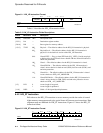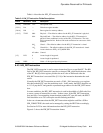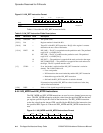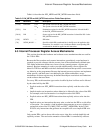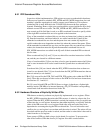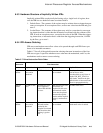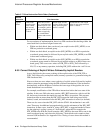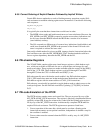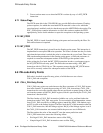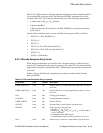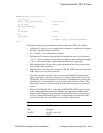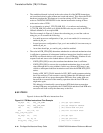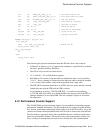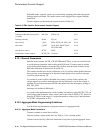21264/EV68A Hardware Reference Manual
Privileged Architecture Library Code 6–11
PALshadow Registers
6.5.6 Correct Ordering of Explicit Readers Followed by Implicit Writers
Certain IPRs that are updated as a result of faulting memory operations require PAL-
code assistance to maintain ordering against newer instructions. Consider the following
code sequence:
HW_MFPR IPR_MM_STAT
LDQ rx,(ry)
It is typically the case that these instructions would issue in-order:
• The MFPR is data-ready and both instructions use a lower subcluster. However, the
HW_MFPRs (and HW_MTPRs) respond to certain resource-busy indications and
do not issue when the MBOX informs the IBOX that a certain set of resources
(store bubbles) are busy.
• The LDs respond to a different set of resource-busy indications (load-bubbles) and
could issue around the HW_MFPR in the presence of the former. PALcode assis-
tance is required to enforce the issue order.
One totally reliable method is to insert an MB (memory barrier) instruction before the
first load that occurs after the HW_MFPR MM_STAT. Another method would be to
force a register dependency between the HW_MFPR and the LD.
6.6 PALshadow Registers
The 21264/EV68A contains eight extra virtual integer registers, called shadow regis-
ters, which are available to PALcode for use as scratch space and storage for com-
monly used values. These registers are made available under the control of the SDE[1]
field of the I_CTL IPR. These shadow registers overlay R4 through R7 and R20
through R23, when the CPU is in PALmode and SDE[1] is set.
PALcode generally runs with shadow mode enabled. Any PALcode that supports
CALL_PAL instructions must run in that mode because the hardware writes a
PALshadow register with the return address of CALL_PAL instructions.
PALcode may occasionally be required to toggle shadow mode to obtain access to the
overlayed registers. See the PALcode restriction, Updating I_CTL[SDE], in Section
D.32.
6.7 PALcode Emulation of the FPCR
The FPCR register contains status and control bits. They are accessed by way of the
MT_FPCR and MF_FPCR instructions. The register is physically implemented like an
explicitly written IPR. It may be written with a value from the floating-point register
file by way of the MT_FPCR instruction. Architecturally-compliant FPCR behavior
requires PALcode assistance. The FPCR register must operate as listed here:
1. Correct operation of the status bits, which must be set when a floating-point
instruction encounters an exceptional condition, independent of whether a trap for
the condition is enabled.
2. Correct values must be returned when the FPCR is read by way of a MF_FPCR
instruction.




